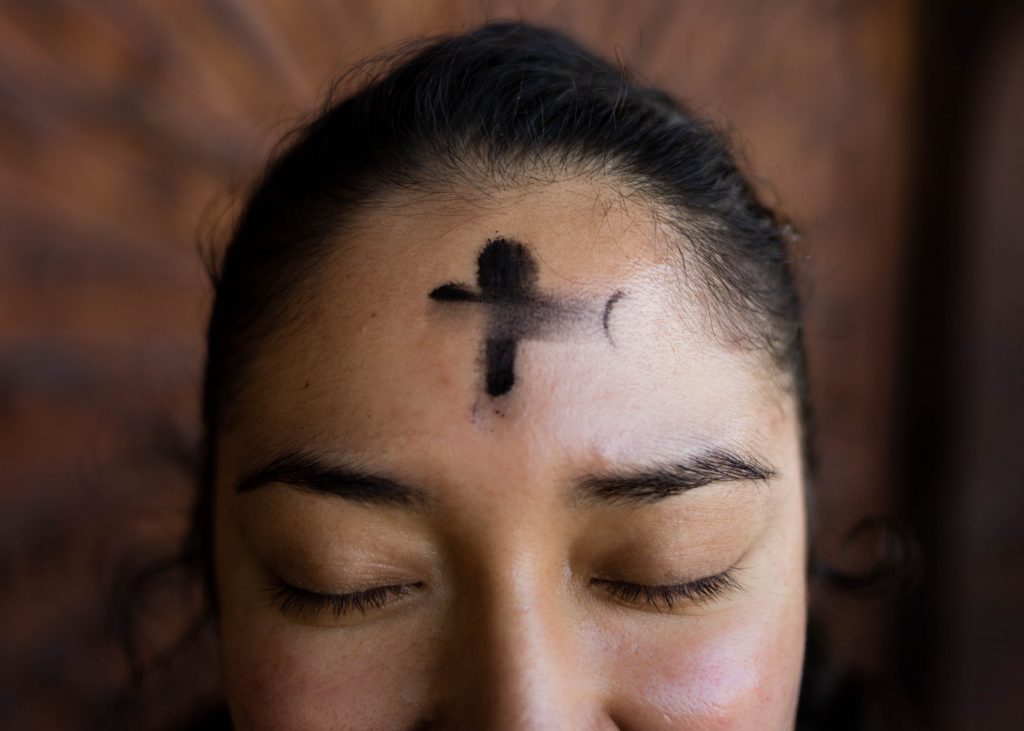Lenten Snow
We’re getting our share of snow as I write this. My apartment looks out on Rittenhouse Square, a classically designed park that has become a dog run this pandemic winter. I find myself watching the various groups that gather: at 8 am on the west side, 9:30 on the south, etc. The dogs chase each other within the boundaries of the formerly grassy sections, rarely crossing the wide walks. The people talk together. I wonder if they knew each other before or have just followed their canine companions. Nobody is walking cats.
The snow is quieting and encourages reflection, especially the day after Ash Wednesday. I was thinking of writing on liturgy this week to free myself from the endless reflections on synodality and church politics, and then found Anna Burnham’s excellent post about Thea Bowman, certainly a liturgical inspiration for all of us.
The Ash Wednesday Zoom liturgy of St. Mary Magdalene Drexel Hill community prompted this reflective mood. Our Community of the Christian Spirit was happy to join them. The “Kyrie eleison” shifted the focus from the Western interpretation of “mercy” as “justice or acquittal” to “God, soothe me, comfort me, take away my pain, show me your steadfast love.” We asked God for “clean hearts” in a comforting Psalm that was a very 21st century examination of conscience. The Gospel of Thomas proclaimed, “When you come to know yourselves then you will be known, and you will realize that you are the children of the Living God. If, however, you do not come to know yourselves, then you will dwell in poverty.” With our homemade ashes, we blessed ourselves, “marked not for sorrow [nor] false humility” but for what God can do with us.
I think of so many small communities creating their own rituals, so many led by women. Maybe you were part of one; please share insights in the comments below, to create the feeling in this virtual space of the shared homilies so frequently part of these liturgies.
Or share what was meaningful to you in your at home or in-person or drive-through Ash Wednesday experience. LaCroix International has a video from “the Soo,” Sault Ste Marie’s Bishop Thomas Dowd explaining their at-home kits with ashes and prayer service. Some Catholic dioceses in the United States seem to have sprinkled ashes on heads, following the Vatican’s advice and the frequent custom in Europe. Others followed the traditional practice, marking foreheads with a cross. Some Protestant churches organized drive-throughs, widely reported on the local news. And a very happy Cardinal Luis Antonio Tagle of Manila dispensed Chinese-Filipino and Chinese Catholics from fasting and abstinence on Ash Wednesday because the Chinese New Year is the next day.
The Catholic press includes more than the news about Ash Wednesday. Dan Horan begins NCR’s Soul Seeing for Lent in conversation with Michael Leach, publisher emeritus of Orbis Books. I prefer the print article, which is less definitional and more spiritual. Horan is thoughtful about Lenten fundamentals, as in this example: “Understood more capaciously, almsgiving is about care of our neighbors, especially those who are most struggling. In a time of great uncertainty, anxiety, isolation and fear, the spirit of almsgiving — that is, giving money or time or attention not only out of our abundance but also out of our primary resources — is needed more than ever.” Future guests in the series are Natalia Imperatori-Lee (March 3), Joan Chittister (March 17), and Richard Rohr (March 31).
America, trying to be all things to all people, gathers the inspirational statements of Bishops around the globe, and balances that with comedian Jeremy McLellan’s irreverent treatment of the differences between the ways Catholics and Muslims fast and pray.
Claudia Avila Cosnahan has a harder edge in Commonweal. This feels more like Lent to me:
“If Church leaders and institutions wish to lead us in our Lenten spiritual journey, it is imperative that they unequivocally acknowledge the seriousness of the times and the horrors the pandemic has wrought. They need to provide opportunities for people to unpack the traumas of lost livelihood, lost loved ones, racism, and xenophobia. They need to raise up their voices and recommit to a pastoral, merciful, and spiritual engagement with the body politic, lest the Church lose itself in political divisions. To not do this would be a disservice to those in need of healing and justice; a disservice to those in need of conversion, because they have hardened their hearts and refused to accept the truth of our social ailments; and a disservice to everyone in between.”
So I’m back to church politics, calling church leaders to repentance. As the snow is slowing, the dogs and people return to the Square.
Lest you think I have totally abandoned focus on the ordination issue, I will call your attention to an opinion piece reviewing the current state of affairs by Gina Menzies in the Irish Times, an historically-important secular and now e-paper in Dublin. WOC has received a lot of press lately but I’m not sure how many US news outlets would print something like this. Maybe it’s because Irish priests are organized and active for women and LGBTQ people. Maybe it’s the Irish heritage as a Catholic country, much less monolithic now. Maybe it’s political leaders who have spoken out, like Mary MacAleese.
I know it’s not because the advocates for our cause are more committed there than we are here. If we need bucking up, we can use the WOC retreat, Creative Wisdom, Subversive Spirit, as an opportunity “to be renewed and strengthened in the journey for ordination justice in the Catholic Church.” It’s the last weekend of this month, and looks to be another deeply meaningful experience, delivered virtually. That’s what Lent can be about this year.



2 Responses
https://www.irishtimes.com/opinion/church-is-running-out-of-reasons-not-to-ordain-women-1.4485498
Very good. That humanity is embodied is more fundamental than sex, which is just one of the features of being a body. This is clearly explained in JP2’s Theology of the Body. For the redemption, and the sacramental economy, the gender of Jesus is as incidental as the color of his eyes — but not so for patriarchal gender ideology.
What a lyrical, as well as factual, post. I could imagine looking out your window onto the park. Then I also received the benefits of your undefatiguable research into current issues as well as the joys and benefits small Eucharistic communities bring to us. Thank you.